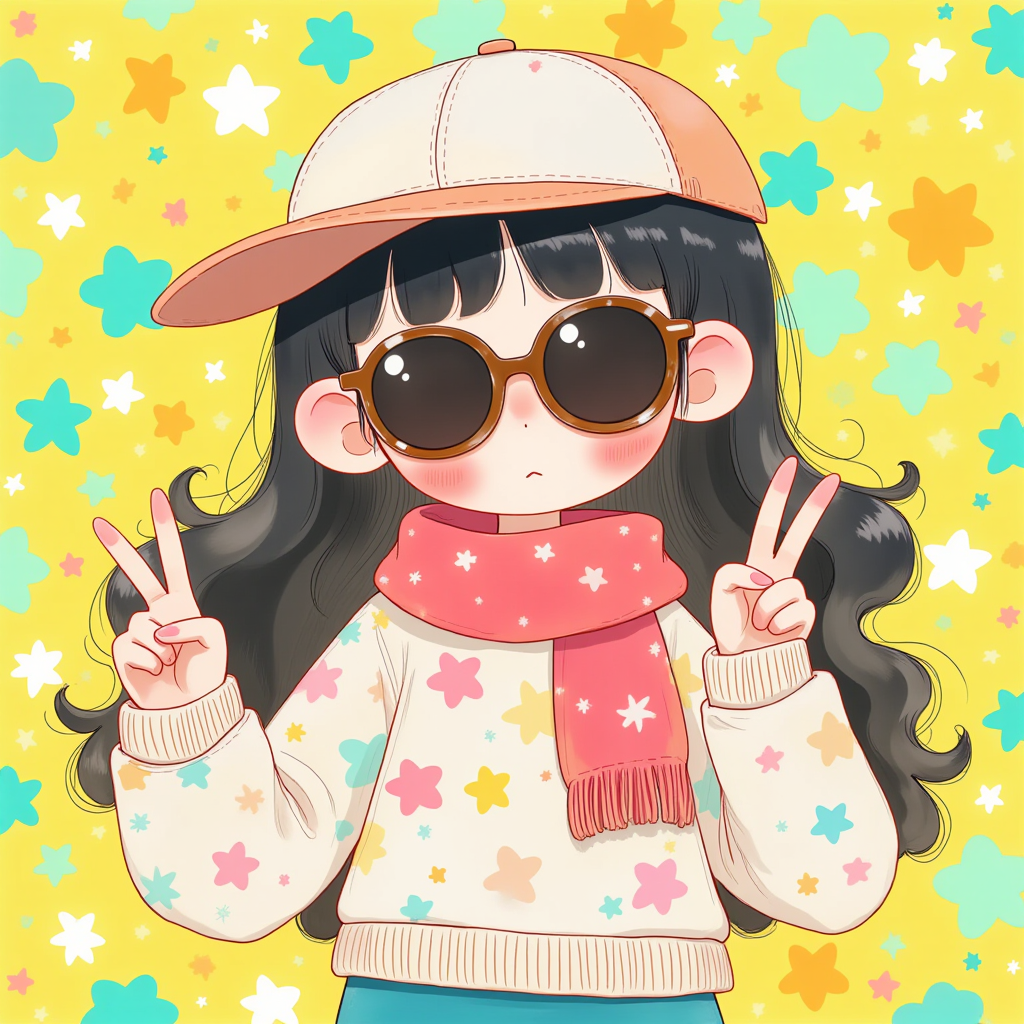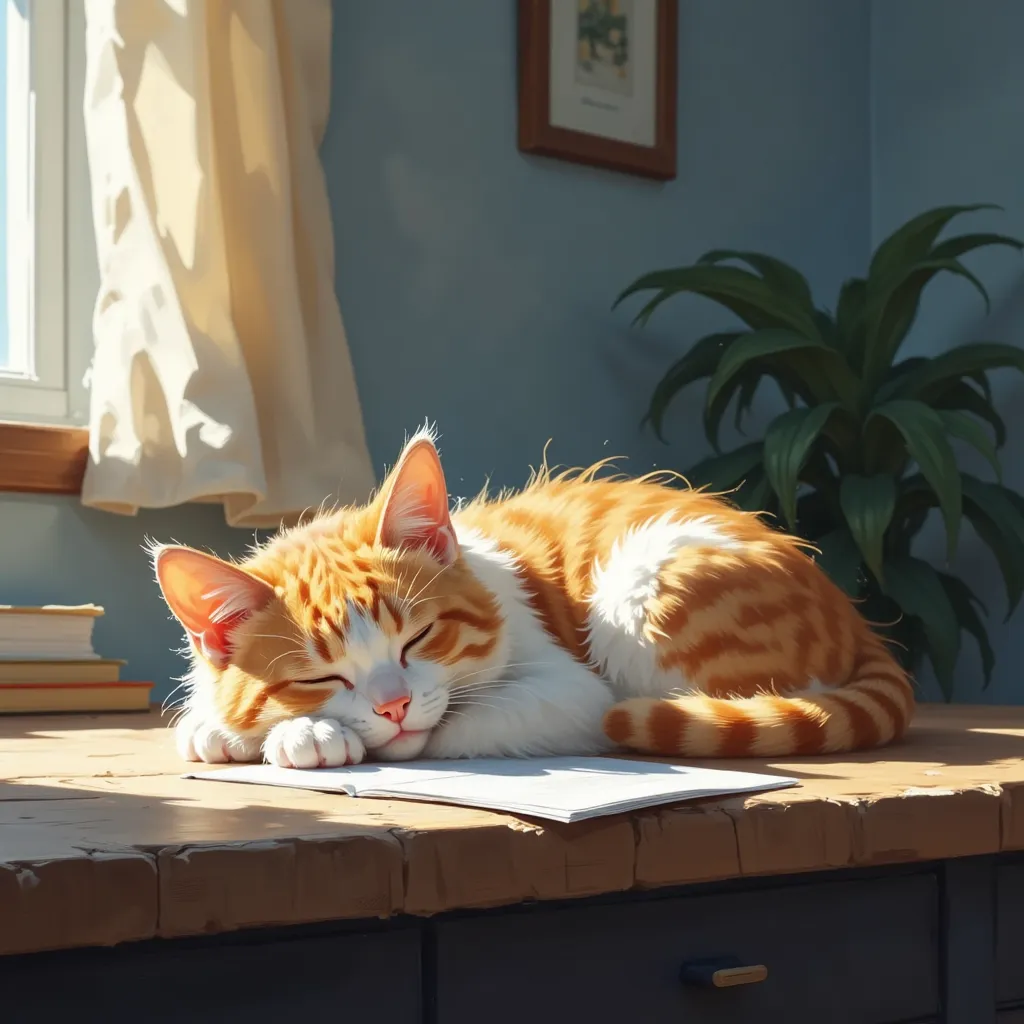flux-new-whimscape
Maintainer: bingbangboom-lab

1

| Property | Value |
|---|---|
| Run this model | Run on Replicate |
| API spec | View on Replicate |
| Github link | No Github link provided |
| Paper link | View on Arxiv |
Create account to get full access
Model overview
The flux-new-whimscape model is a Flux LoRA (Low-Rank Adaptation) model created by bingbangboom-lab for generating whimsical illustrations. It is similar to other Flux LoRA models like flux-dreamscape, flux-ghibsky-illustration, flux-childbook-illustration, and flux-mystic-animals, all of which aim to create unique and imaginative illustrations using the Flux model.
Model inputs and outputs
The flux-new-whimscape model takes a variety of inputs, including a prompt, image, seed, and hyperparameters to control the generation process. The output is an image or set of images in the specified format (e.g. WEBP).
Inputs
- Prompt: The text prompt that describes the desired image
- Image: An input image for img2img or inpainting mode
- Seed: A random seed for reproducible generation
- Model: The specific model to use for inference (e.g. "dev" or "schnell")
- Width and Height: The desired dimensions of the generated image in text-to-image mode
- Aspect Ratio: The aspect ratio for the generated image in text-to-image mode
- Num Outputs: The number of images to generate
- Guidance Scale: The guidance scale for the diffusion process
- Prompt Strength: The prompt strength when using img2img or inpainting
- Num Inference Steps: The number of inference steps to perform
Outputs
- Images: The generated image(s) in the specified output format
Capabilities
The flux-new-whimscape model is capable of generating whimsical, imaginative illustrations based on the provided prompt. The model can create a variety of styles, from surreal and dreamlike to more grounded and realistic, by combining different Flux LoRA models. For example, using the prompt "illustration in the style of WHMSCPE001" can produce enchanting, whimsical landscapes with fantastical elements.
What can I use it for?
The flux-new-whimscape model could be useful for a variety of applications, such as:
- Generating illustrations for children's books, greeting cards, or other creative projects
- Conceptualizing new product designs or marketing materials with a whimsical flair
- Experimenting with different art styles and collaborating with artists to explore new creative directions
- Inspiring personal creativity and self-expression through imaginative image generation
Things to try
Try experimenting with different prompts and model configurations to see the range of whimsical illustrations the flux-new-whimscape model can produce. You can also combine it with other Flux LoRA models like flux-dreamscape or flux-ghibsky-illustration to create unique, blended styles. Additionally, you can try using the model for inpainting or img2img tasks to see how it can transform existing images into whimsical illustrations.
This summary was produced with help from an AI and may contain inaccuracies - check out the links to read the original source documents!
Related Models

flux-dreamscape

20
flux-dreamscape is a Flux LoRA model developed by bingbangboom-lab that can generate unique and imaginative dream-like images. It is similar to other Flux LoRA models such as flux-koda, flux-pro, flux-cinestill, and flux-ghibsky-illustration, which each have their own distinct styles and capabilities. Model inputs and outputs flux-dreamscape takes in a text prompt and optional image, mask, and other parameters to generate surreal, dreamlike images. The model can produce multiple outputs from a single input, and the images have a high level of detail and visual interest. Inputs Prompt**: The text prompt that describes the desired image Image**: An optional input image for inpainting or image-to-image tasks Mask**: An optional mask to specify which parts of the input image should be preserved or inpainted Seed**: A random seed value for reproducible generation Model**: The specific model to use, with options for faster generation or higher quality Width and Height**: The desired dimensions of the output image Aspect Ratio**: The aspect ratio of the output image, with options for custom sizes Num Outputs**: The number of images to generate Guidance Scale**: The strength of the text prompt in guiding the image generation Prompt Strength**: The strength of the input image in the image-to-image or inpainting process Extra LoRA**: Additional LoRA models to combine with the main model LoRA Scale**: The strength of the LoRA model application Outputs Image(s)**: The generated image(s) in the specified output format (e.g., WebP) Capabilities flux-dreamscape can generate surreal, dreamlike images with a high level of detail and visual interest. The model is capable of producing a wide variety of imaginative scenes, from fantastical landscapes to whimsical characters and objects. The dreamlike quality of the images sets this model apart from more realistic text-to-image models. What can I use it for? flux-dreamscape could be a useful tool for artists, designers, or anyone looking to create unique and inspiring visuals. The model's capabilities could be applied to a range of projects, such as concept art, album covers, book illustrations, or even video game assets. The model's ability to generate multiple outputs from a single input also makes it a valuable tool for experimentation and ideation. Things to try One interesting aspect of flux-dreamscape is its ability to combine the main model with additional LoRA models, allowing users to further customize the style and content of the generated images. Experimenting with different LoRA models and scales can lead to a wide range of unique and unexpected results, making this model a versatile tool for creative exploration.
Updated Invalid Date

flux-ghibsky-illustration

14
The flux-ghibsky-illustration model is a powerful AI model developed by aleksa-codes that can create serene and enchanting landscapes with vibrant, surreal skies and intricate, Ghibli-inspired elements. This model is part of the Flux family of models, which includes similar creations like flux-softserve-anime, flux-dev-lora, flux-half-illustration, and flux-dev-realism. Model inputs and outputs The flux-ghibsky-illustration model takes a variety of inputs, including a prompt, seed, aspect ratio, number of outputs, guidance scale, and more. These inputs allow you to customize the generated images to your specific needs. The model then outputs a set of images that reflect the provided prompt and settings. Inputs Prompt**: The text prompt that describes the desired image Seed**: A random seed to ensure reproducible generation Aspect Ratio**: The aspect ratio for the generated image, which can be set to a predefined ratio or custom dimensions Number of Outputs**: The number of images to generate Guidance Scale**: A parameter that controls the balance between the prompt and the model's own learned patterns Outputs Images**: The generated images that match the input prompt and settings, outputted in the specified format (e.g., WEBP) Capabilities The flux-ghibsky-illustration model excels at creating captivating, Ghibli-inspired landscapes with a serene and dreamlike quality. By leveraging the "GHIBSKY style" prompt, the model is able to generate images that evoke the atmospheric beauty found in the works of acclaimed anime director Makoto Shinkai. What can I use it for? The flux-ghibsky-illustration model could be useful for a variety of creative projects, such as concept art for games or films, illustrations for books or magazines, or even as the basis for digital art commissions. The model's ability to generate unique and visually striking images makes it a valuable tool for artists, designers, and anyone looking to add a touch of magic to their creative work. Things to try One interesting aspect of the flux-ghibsky-illustration model is its ability to generate images with a strong sense of mood and atmosphere. By experimenting with different prompts, seed values, and other input parameters, you can explore a wide range of visual styles and themes, from serene and tranquil to vibrant and surreal. Try combining the "GHIBSKY style" prompt with various landscape elements, weather conditions, or even fantastical creatures to see what kinds of enchanting scenes the model can produce.
Updated Invalid Date

sdxl-lightning-4step

412.2K
sdxl-lightning-4step is a fast text-to-image model developed by ByteDance that can generate high-quality images in just 4 steps. It is similar to other fast diffusion models like AnimateDiff-Lightning and Instant-ID MultiControlNet, which also aim to speed up the image generation process. Unlike the original Stable Diffusion model, these fast models sacrifice some flexibility and control to achieve faster generation times. Model inputs and outputs The sdxl-lightning-4step model takes in a text prompt and various parameters to control the output image, such as the width, height, number of images, and guidance scale. The model can output up to 4 images at a time, with a recommended image size of 1024x1024 or 1280x1280 pixels. Inputs Prompt**: The text prompt describing the desired image Negative prompt**: A prompt that describes what the model should not generate Width**: The width of the output image Height**: The height of the output image Num outputs**: The number of images to generate (up to 4) Scheduler**: The algorithm used to sample the latent space Guidance scale**: The scale for classifier-free guidance, which controls the trade-off between fidelity to the prompt and sample diversity Num inference steps**: The number of denoising steps, with 4 recommended for best results Seed**: A random seed to control the output image Outputs Image(s)**: One or more images generated based on the input prompt and parameters Capabilities The sdxl-lightning-4step model is capable of generating a wide variety of images based on text prompts, from realistic scenes to imaginative and creative compositions. The model's 4-step generation process allows it to produce high-quality results quickly, making it suitable for applications that require fast image generation. What can I use it for? The sdxl-lightning-4step model could be useful for applications that need to generate images in real-time, such as video game asset generation, interactive storytelling, or augmented reality experiences. Businesses could also use the model to quickly generate product visualization, marketing imagery, or custom artwork based on client prompts. Creatives may find the model helpful for ideation, concept development, or rapid prototyping. Things to try One interesting thing to try with the sdxl-lightning-4step model is to experiment with the guidance scale parameter. By adjusting the guidance scale, you can control the balance between fidelity to the prompt and diversity of the output. Lower guidance scales may result in more unexpected and imaginative images, while higher scales will produce outputs that are closer to the specified prompt.
Updated Invalid Date

flux_img2img

8
flux_img2img is a ready-to-use image-to-image workflow powered by the Flux AI model. It can take an input image and generate a new image based on a provided prompt. This model is similar to other image-to-image models like sdxl-lightning-4step, flux-pro, flux-dev, realvisxl-v2-img2img, and ssd-1b-img2img, all of which are focused on generating high-quality images from text or image inputs. Model inputs and outputs flux_img2img takes in an input image, a text prompt, and some optional parameters to control the image generation process. It then outputs a new image that reflects the input image modified according to the provided prompt. Inputs Image**: The input image to be modified Seed**: The seed for the random number generator, 0 means random Steps**: The number of steps to take during the image generation process Denoising**: The denoising value to use Scheduler**: The scheduler to use for the image generation Sampler Name**: The sampler to use for the image generation Positive Prompt**: The text prompt to guide the image generation Outputs Output**: The generated image, returned as a URI Capabilities flux_img2img can take an input image and modify it in significant ways based on a text prompt. For example, you could start with a landscape photo and then use a prompt like "an anime style fantasy castle in the foreground" to generate a new image with a castle added. The model is capable of making large-scale changes to the image while maintaining high visual quality. What can I use it for? flux_img2img could be used for a variety of creative and practical applications. For example, you could use it to generate new product designs, concept art for games or movies, or even personalized art pieces. The model's ability to blend an input image with a textual prompt makes it a powerful tool for anyone looking to create unique visual content. Things to try One interesting thing to try with flux_img2img is to start with a simple input image, like a photograph of a person, and then use different prompts to see how the model can transform the image in unexpected ways. For example, you could try prompts like "a cyberpunk version of this person" or "this person as a fantasy wizard" to see the range of possibilities.
Updated Invalid Date